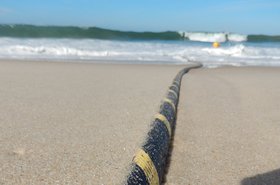Submarine cables may be at risk from anchors, sharks, and foreign adversaries, but they are safe from solar storms.
Researchers at Google set out to understand the dangers of such storms as we enter Solar Cycle 25, a period of increased solar activity. They found that risk of large-scale cable damage from a solar storm is low.
Google has part- or fully-funded 22 submarine cables around the world, while the wider industry is responsible for 99 percent of intercontinental data traffic.
Should they be disrupted, the Internet as we know it would stop working.
With that in mind, Google was concerned about what would happen in a severe solar storm, like the 1859 Carrington Event, the strongest geomagnetic storm in recorded history that damaged telegraph networks at the time.
A more recent 1989 storm caused power outages across Eastern Canada.
Such storms distort the Earth’s magnetic field, generating electric fields that propagate through the conducting interior of the Earth. This can enter transmission lines through grounding points, inducing large voltage swings.
While such voltage swings would also be experienced by submarine cables, the impact is negligible, Google said.
Using data from smaller storms, as well as from one cable in 1989, they found that "an event like the 1859 Carrington Event would only result in a voltage increase of 800 Volts."
Submarine cables such as Google's are built with redundant power at each end of the cable line, allowing for them to "typically absorb fluctuations of up to 6,000 Volts."
Google plans to publish the study in a peer-reviewed scientific paper next year.




